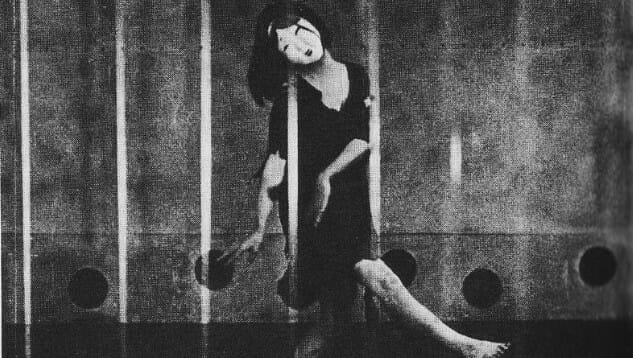
This post is part of Paste’s Century of Terror project, a countdown of the 100 best horror films of the last 100 years, culminating on Halloween. You can see the full list in the master document, which will collect each year’s individual film entry as it is posted.
The Year
The back half of the 1920s is not exactly horror’s most prolific era, at least in terms of the volume of films being produced, but there are a few notable exceptions in each year. 1926 is one of the rare years that doesn’t see the release of any Lon Chaney horror flicks, but instead we’re gifted with two very distinct international classics: Germany’s Faust from Nosferatu creator F.W. Murnau, and Japan’s singularly strange A Page of Madness from innovator Teinosuke Kinugasa.
Of the two, Faust is better remembered by most horror audiences today, and not without reason. Murnau employs many of the same fantastical, expressionistic visual cues present in Nosferatu to tell a tale that has been adapted countless times in cinema, hewing fairly closely to the framework of Johann Wolfgang von Goethe’s legendary stage adaptation of Faust. The great Emil Jannings is cast in one of his best roles as the devil Mephisto, towering over Faust’s village in a way that would presage the “Night on Bald Mountain” sequence in 1940’s Fantasia. Equal parts buffoonish and genuinely unsettling, Jannings figures prominently in Paste’s list of the 25 greatest film Satans for a reason.
In the end, though, we have to lean toward A Page of Madness for its disconcerting uniqueness, which is utterly unlike anything else that can be found in the same time period.
1926 Honorable Mentions: Faust, The Man Who Cheated Life, The Bells, The Magician
The Film: A Page of Madness
Director: Teinosuke Kinugasa
For 45 years after its initial release in 1926, almost no one on Earth was even aware of the existence of A Page of Madness. The silent, avant garde horror film had come and gone largely unnoticed during its original release, the product of an artist collective called the “School of New Perceptions” who seemed to be rebelling against naturalism by making the most surrealist and nightmare-inducing series of images they could conceive. A challenging, bizarre film even in its home market, A Page of Madness must have left some perplexed viewers scratching their heads in 1920s Japan, but after its initial release it was physically locked away and forgotten, until it was rediscovered by director Kinugasa himself in 1971—legend has it that the director literally unearthed it in his garden shed, having forgotten he ever stored it there. What followed was a long-overdue rediscovery by the film world, which reacted in awe at the sheer, disconcerting imagination that Kinugasa and his collaborators captured back in 1926.
The story of A Page of Madness, such that exists, revolves around a middle-aged janitor at an insane asylum, who wanders the halls with his mop and observes the patients in their various states of frenzied activity. The audience slowly comes to realize that the janitor’s intent at the asylum is to secretly care for his wife, a patient who went mad due to her husband’s cruel treatment of her. Wracked by guilt, and also trying to provide for a daughter who is seeking a socially respectable husband, the janitor must hide the existence of his wife from the world, lest his daughter’s honor be tainted by the association.
This, at least, is the film’s story on paper. In reality, almost all of A Page of Madness must be inferred by the audience. Lacking intertitles and traditional dialog, the film would have been accompanied in its initial runs by an in-house narrator to provide crucial context. Functioning as a truly silent film, the audience is simply left to pick meaning from the disorienting, searing imagery of insanity.
And truly, this film really is disturbing viewing, even to a modern audience. Beautifully shot but spastically edited, it intercuts a constant stream of impressionistic imagery over sequences depicting various mental patients, queuing up startling visual metaphors for the mental degradation of both the criminally insane and our ailing protagonist, while maintaining a degree of empathy for both. Its purpose isn’t to gawk at a freak show of crazies behind bars, but to note just how thin the line is between people on one side of the divide and the other.
Regardless, A Page of Madness belongs now to the small class of silent horror films from the 1920s that remain genuinely unnerving to watch today. If you put this film on during the background of a Halloween party, someone will ask you, sooner rather than later, to turn it off. And they’ll probably say something like “This thing is freaking me out, man.”
Jim Vorel is a Paste staff writer and resident horror guru. You can follow him on Twitter for more film and TV writing.